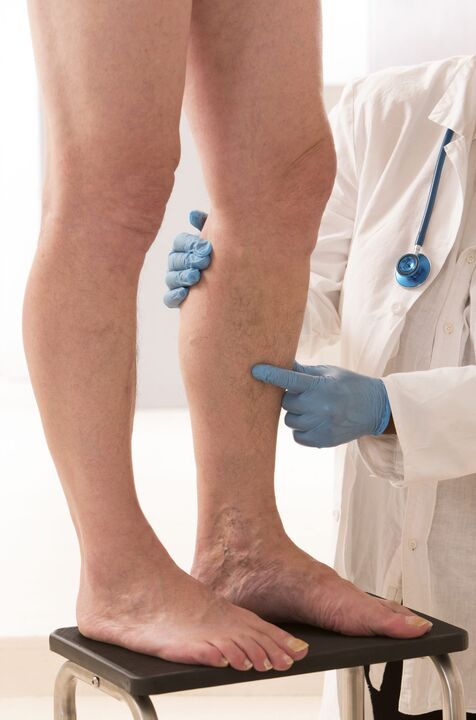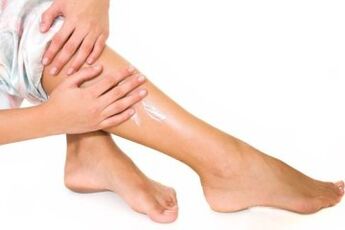Varicose veins: Many people are subject to this disease, all in view of the mass of risk reasons during life with it. The pathological process is often located on the legs, affecting superficial veins, subject to progression, is able to cause serious health damage.
However, in addition to the blood vessels located near the surface, the varicose veins that are deeply located, are often larger. This type of pathology can cause many more problems, cause more serious violations. To resist disease, it is important to understand the mechanism of their development, causes, symptoms and also know the principles of treatment.

What are deep varicose veins?
If we talk about varicose veins, in principle, this term in medicine denotes veins disease, in which the functions of blood transport through these vessels are altered due to their deformation of variable gravity. In other words, the veins are stretched, expand, their walls are thinned, the work of the valves located inside, etc. All this leads to the fact that the blood moves worse, heads towards the heart and its stagnation occurs in the vessels.
Most people represent varicose veins of the lower extremities such as the beginning of individual vessels and vascular mesh near the skin surface. At the same time, fans and deformed veins are clearly visible to the naked eye and performance is true, if we talk purely about aesthetic manifestations.
As for the deep varicose veins, or rather, the varicose veins, we are talking about similar violations, but now they affect the venous vessels located in the thickness of muscle tissue. This means that even in the most severe stage of the pathological process, these veins will not appear on the surface.
Such a pathological process is dangerous not only with its secret. The deep veins, including small and large berets, calf and others, are much larger. Consequently, more blood passes, they take a more significant part in a large circle of blood circulation, and their damage is more severely affected by human health.
This means that with varicose veins, stagnant blood processes are much more serious. At the same time, a person can feel severe pain, an increase in leg fatigue, etc. But the even more dangerous consequences are that with excessively greater pressure in the veins, its walls that are too thin may not endure, which threatens ruptures of the latter and internal hemorrhage. In the case of deep bleeding veins, depending on the degree of gravity and location, it is much more serious and dangerous than with varicose vessels.
Causes of the disease
Understand why the varicose veins develop, allows the patient if the development of the disease was not prevented, then at least fight more successful and not give pathology to progress. In general, it is worth listing not only the causes of varicose veins, but also the contributing factors:
- The main reason is the constant survival of the legs due to the long -term location in the standing position. This is partly why varicose veins are considered a professional disease that is often developed in chefs, hairdressers, as well as other people who, due to professional employment, spend most of the time in their legs and even in a static position.
- Genetics: Most doctors do not believe that predisposition to the development of varicose veins is transmitted by inheritance. In this case, a predisposition to the failure of venous valves is implicit.
- Due to the fact that the predisposing factor in the development of varicose veins are excessive constant loads in the legs, this pathological process is highly developed in people with obesity. In addition, the greater the overweight, the greater the probability of the development of the disease.
- A passive and sedentary lifestyle: the lack of regular loads in muscle structures also negatively affects the functioning of the vascular system. Even higher, the probability of varicose veins, if a person not only does not enter sports and moves little, but feels most of the time.
- Pregnancy: In women in the development of varicose veins, it is due to a series of factors. This is an increase in leg load due to the growth of the fetus, the change in blood chemistry, but the main reason is the restructuring of the hormonal background, namely an increase in progesterone production. In the same way, varicose veins can cause prolonged intake of hormonal drugs.
- Thrombosis is a disease in which platelet content increases in the blood, which increases the blood coagulation coefficient. This factor leads to a slowdown in blood circulation, as well as damage to blood vessels.
This is the list of the most likely causes and factors that cause the development of the varicose expansion of the deep vessels of the lower extremities. However, here you can also add endocrine disorders, physical damage, etc.

Symptoms
As mentioned above, the main disadvantage of the deep veins is that its development takes place inadvertent in the initial stages, there are no visual signs of the disease before. Despite this, even the initial forms of the pathological process have certain symptoms, which is important to pay attention:
- The patient feels greater fatigue and sensations of heaviness on the legs that are felt mainly in the afternoon or at the end of the afternoon. It is characteristic that after relaxation or night sleep, these signs disperse and do not bother until the next night, provided that the charges are on the feet during the day;
- Another alaristic feature is the swelling of the legs, even the insignificant. If the legs swell at night or in the morning without apparent reason, for example, in the absence of kidney pathologies, this may indicate varicose veins.
If such symptoms are found, it is very important to consult a doctor for diagnosis. However, the initial stages of the varicose veins can occur completely imperceptibly, in which case the clinical signs will already appear with the development of 2-3 stages of the disease, they can be the following:
- In addition to fatigue and gravity, which intensifies at night, patients complain of serious legs. Pain syndrome also has the ability to intensify at night, but in the posterior stages of the disease it can be constantly present.
- Strengthening the edema of the extremities, the legs can also increase continuously, while the intensity of the edema is high, it is impossible to lose them.
- The defeat and deformation of the deep veins in the last stages of the progression of the pathology is also reflected in the superficial vessels, so venous nets appear in the legs, vascular "stars" appear. There is also a protuberance of veins in the legs with intense loads.
- In addition, the skin of the lower extremities acquires a bluish dye, especially in those places where deep vessels are more affected.
- One of the signs of the progression of the varicose expansion of the deep veins are the convulsions of the calf muscles, they refer to the patient often, mainly during the night sleep.
Diagnosis
For diagnosis and diagnosis, as well as for additional treatment, it is necessary to contact a phlebologist. The doctor prescribes a series of diagnostic measures, in general, the disease detects the disease is as follows:
- Primary inspection with the collection history and the patient's complaints.
- Ultrasound of leg ships.
- Dopplerography for the detection of blood clots.
- In addition, urine and blood biochemistry tests may be required.
Treatment methods
The treatment of deep varicose veins of the lower extremities also requires the participation and nearby observation of a pharmothyticologist. In addition, to achieve the maximum therapeutic effect, the treatment must be complex, consists of:
- Pharmacological therapy.
- Popular remedies.
- Using compression linen.
- Surgical intervention.
- Physical Education Medicine.
- Adjust the lifestyle.
To understand the principles of treatment, we will consider three main methods, traditional and non -traditional medicine, as well as surgical treatment.
Medications
Depending on the degree of progression of the disease and the complaints of the patients, pharmacological therapy includes the use of several drug groups:
- Anesthesia, among which are mainly used by NSAIDs and muscle relaxants.
- The base of the treatment is venotonic, which fights with venous deficiency.
- Anicoagulants that contribute to a decrease in blood clotting.
- Phlegotónica, strengthening the walls of the blood vessels and increasing the output of the lymph.
Popular remedies
In popular medicine, varicose veins are common to treat mainly with special compresses and ointments based on natural components. Despite the fact that with damage to deep vessels, they are not so effective, they remain a certain therapeutic effect that is improved by coupling with traditional medicine. The following funds are especially good in this matter:

- Propolian alcohol tincture.
- Chestnut tincture.
- Fresh cabbage compresses.
- Bathrooms with essential oils.
Surgery
In spite of all of the above, the most effective method to combat any form of varicose veins, provided that the disease is progress, is surgical intervention. In this sense, several types of operations can also be distinguished:
- Flebectomy: split of the affected area of the container.
- Sclerotherapy is a new method that implies the introduction of a special substance in a vein that paste the glass, after which the latter is gradually replaced by connective tissue.
- Laser intravascular coagulation is the thermal effect of the affected area of the vein, in which the vascular wall is destroyed and at the same time the reflux of the blood is avoided.























